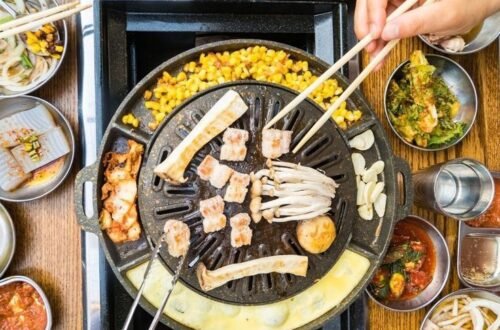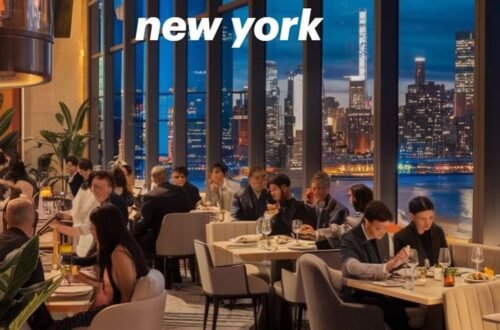Restaurants have always been more than just places to eat—they are cultural hubs, social spaces, and reflections of society’s evolving tastes. Over the last decade, the restaurant industry has undergone tremendous changes, influenced by technology, shifting consumer preferences, and global events. Today’s dining culture is an intersection of tradition and innovation, blending classic culinary artistry with modern demands for sustainability, convenience, and experience-driven outings
The Rise of Experiential Dining
For many diners, a meal is no longer just about food; it is about the experience. Modern restaurants often design their spaces to evoke emotion and create memorable moments. From themed interiors to open kitchens that allow guests to watch chefs at work, atmosphere has become just as important as what is served on the plate. Pop-up dining experiences, immersive culinary events, and chef’s tasting menus are all examples of how restaurants focus on storytelling through food and environment.
Social media has amplified this trend. A visually striking dish or uniquely designed restaurant interior can quickly gain attention online, drawing in curious patrons eager to experience it themselves. This has encouraged chefs and restaurateurs to think beyond taste, considering presentation, plating, and ambiance as integral parts of the dining journey.
Sustainability on the Menu
Another major shift has been the growing emphasis on sustainability. Diners today are more conscious of where their food comes from and how it impacts the environment. As a result, many restaurants are adopting practices such as sourcing locally grown produce, reducing food waste, and using eco-friendly packaging for takeout.
Plant-based dining has also seen significant growth. What was once a niche market is now mainstream, with many high-end restaurants offering plant-forward menus that highlight vegetables in innovative ways. This movement is not only about catering to vegetarians or vegans but also about appealing to health-conscious and environmentally aware consumers.
In addition, zero-waste cooking—using every part of an ingredient—has gained popularity. From crafting stocks with vegetable trimmings to creating desserts from surplus fruit, chefs are finding creative ways to minimize waste while adding unique flavors to their menus.
Technology at the Table
Technology has become a defining factor in modern dining. Contactless payments, digital menus, and online reservations are now standard. Many restaurants have also integrated ordering apps and QR codes, streamlining the dining process for convenience.
Delivery platforms have reshaped the restaurant landscape as well. While traditional dining remains central, the boom in delivery and takeout has forced restaurants to adapt. Some establishments have created virtual brands that operate exclusively online, serving food designed specifically for delivery.
Technology also plays a role in enhancing the guest experience. AI-powered systems help restaurants predict demand, manage inventory, and even personalize recommendations for regular customers. For diners, this means a smoother, more tailored experience that blends hospitality with efficiency.
Cultural Fusion and Global Flavors
Modern restaurants increasingly embrace cultural diversity by blending flavors from around the world. Fusion cuisine, once controversial, is now celebrated as a way to explore creativity and reflect the interconnectedness of today’s global society. Chefs are drawing from multiple traditions, crafting dishes that merge techniques and ingredients in unexpected ways.
Street food has also made its way into fine dining. Inspired by vibrant food markets worldwide, many upscale restaurants reimagine classic street fare, presenting it with elevated techniques and premium ingredients. This democratization of flavor celebrates cultural heritage while catering to adventurous eaters.
Community and Connection
While fine dining often grabs headlines, local restaurants remain essential community pillars. Neighborhood eateries, family-run establishments, and small cafes provide more than meals—they foster connections. Especially in times of crisis, local restaurants have proven resilient, adapting to challenges while maintaining their role as gathering places.
Community-driven dining is also on the rise. From farm-to-table collaborations with local farmers to restaurants donating meals to those in need, many businesses see their role as extending beyond profit. This sense of responsibility strengthens loyalty, as diners increasingly value restaurants that give back to society.
Health and Wellness
The modern diner is increasingly health-conscious. Restaurants now cater to a variety of dietary needs, offering gluten-free, keto, paleo, and allergen-friendly options without compromising flavor. Menus are more transparent, with many establishments listing nutritional details and sourcing information.
The wellness movement also extends to beverages. Mocktails, kombucha, and herbal infusions are gaining ground as alternatives to traditional alcoholic drinks. This reflects a cultural shift toward mindful consumption, where balance and well-being take priority.
The Challenges Facing Restaurants
Despite these exciting developments, the industry faces significant challenges. Rising costs of ingredients, labor shortages, and supply chain disruptions remain hurdles. Many restaurants also grapple with the balance between dine-in and delivery, trying to maintain quality across different service models.
Another challenge is the pressure of online reviews and social media visibility. While digital platforms can help restaurants gain popularity, they also expose businesses to heightened scrutiny. A single viral post—positive or negative—can dramatically influence a restaurant’s reputation.
The Future of Dining
Looking ahead, restaurants will continue to adapt to evolving consumer values. Sustainability, technology, and personalization will remain at the forefront. Hybrid dining models, combining physical restaurants with delivery-focused virtual brands, are likely to expand.
We may also see more integration of immersive technology, such as augmented reality menus or virtual dining experiences, blending digital and physical worlds. At the same time, diners will continue to seek authenticity—restaurants that tell meaningful stories through food, honor traditions, and create genuine connections.
Conclusion
The modern restaurant landscape reflects broader societal shifts: a demand for experiences, a commitment to sustainability, and a blending of global influences. While challenges exist, restaurants remain vital spaces where culture, community, and creativity intersect. Whether it’s a neighborhood café or a Michelin-starred destination, the essence of dining endures—bringing people together to share not just food, but stories and moments that enrich our lives.






